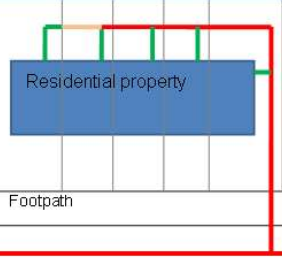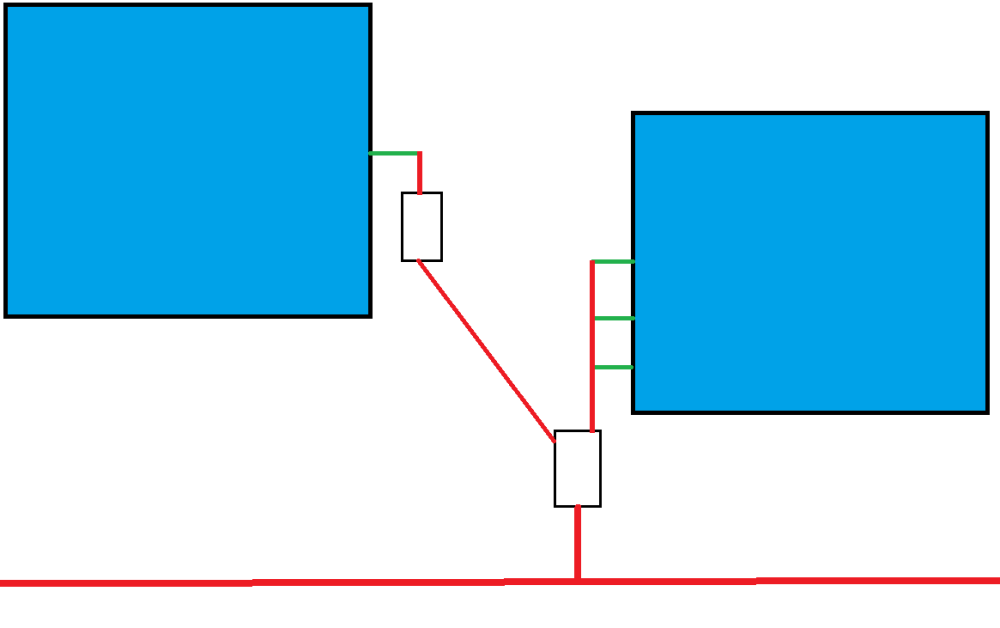-
Posts
7 -
Joined
-
Last visited
Personal Information
-
About Me
Ex Military RAF
Fire Safety Student
Software Engineer Hobbyist
-
Location
UK/EU
Recent Profile Visitors
The recent visitors block is disabled and is not being shown to other users.
JuddlyFire's Achievements

Member (3/5)
3
Reputation
-

Building over an Access/Inspection chamber
JuddlyFire replied to Spinny's topic in Building Regulations
-

Building over an Access/Inspection chamber
JuddlyFire replied to Spinny's topic in Building Regulations
What am I missing? "ownership of and responsibility for their maintenance will transfer to the water and sewerage company" -

Building over an Access/Inspection chamber
JuddlyFire replied to Spinny's topic in Building Regulations
"A. Which assets will be transferred? (i) The Scope and Extent of Transfer 1. The aim of transfer is to relieve the owners of private underground drainage of responsibility for its maintenance where that drainage connects to the public sewerage system. Where existing foul, surface water or combined sewers, and any drains of that nature serving individual properties which are outside the curtilage of the property they serve, connect to the public sewerage system then the ownership of and responsibility for their maintenance will transfer to the water and sewerage company for the area." & Leaves you in a strong position to protest any works, or more realistically have the neighbour install a new inspection pit as part of their build. -

Building over an Access/Inspection chamber
JuddlyFire replied to Spinny's topic in Building Regulations
That makes intuitive sense. Do you have a link or reference? -

Building over an Access/Inspection chamber
JuddlyFire replied to Spinny's topic in Building Regulations
The core regulation states: "Buildings or extensions should not be constructed over a manhole or inspection chamber or other access fitting on any sewer (serving more than one property)." (Document G, Section Index, paragraph 1.3, page 808)↗ This is quite clear - you generally cannot build over these access points when they serve multiple properties. In this specific case, the critical question is whether the drain in question qualifies as a "sewer serving more than one property." Based on your description and diagram, since the neighbour's drain crosses the boundary and connects to your inspection chamber (which both properties feed into), this appears to be exactly the type of sewer the regulation is addressing yet the sewer company identifies the entire system as a public sewer (even if not on their map) conflicts with this interpretation. (Document G, Section Index, paragraph 1.3, page 808)↗ There's an important exception to note: "Buildings and extensions should not be located where they would remove such a provision where this already exists, unless an alternative access point can be provided on the line of the sewer at a location acceptable to the owner (i.e. the sewerage undertaker in the case of a public sewer)." (Document G, Section Index, paragraph 1.3, page 808)↗ This means: Simply installing a floor hatch (as your neighbour proposes) might be acceptable BUT it must be approved by the sewerage undertaker The alternative access must be "on the line of the sewer" and "acceptable to the owner" Regarding your concern about maps: The regulations do state "These provisions apply to the construction, extension or underpinning of a building over or within 3m of the centreline of an existing drain, sewer or disposal main shown on the sewerage undertaker's sewer records..." (Document G, Section Index, paragraph 0.1, page 807)↗ However, the sewer company has already confirmed this is a public sewer despite not being on their map. The key precedent here is that the sewer company has already stated these are public sewers. Their position carries significant weight in determining regulatory applicability. You should contact them directly with your neighbour's plans to get their official position. I'd recommend your neighbour: Formally consult the sewerage undertaker before proceeding (Document G, Section Index, paragraph 0.3, page 808)↗ Submit detailed plans showing how the floor hatch will provide adequate emergency access Get written approval from the sewerage undertaker Without this approval, building control would likely reject the plans since "Where it is proposed to construct a building over or near a drain or sewer shown on any map of sewers, the developer should consult the owner of the drain or sewer..." (Document G, Section Index, paragraph 0.3, page 808)↗ - and in this case, the sewer company has already established it's their responsibility. This isn't a "huge hole" in the regulations - it's a situation where professional judgment from the sewerage undertaker is required, which is common in boundary drainage situations. Source File: The_Merged_Approved_Documents_Oct24.pdf -

Building over an Access/Inspection chamber
JuddlyFire replied to Spinny's topic in Building Regulations
Buildings or extensions should not be constructed over a manhole or inspection chamber or other access fitting on any sewer (serving more than one property) (Document G, Section Index, paragraph 1.3, page 808)↗. Approved Document H1 Section 2, paragraph 2.53 provides that access points to sewers (serving more than one property) should be in places where they are accessible and apparent for use in an emergency (Document G, Section Index, paragraph 1.3, page 808)↗. If an extension is to be constructed, the access/inspection chamber must be retained or alternative access/inspection points made, as indicated in the requirement that buildings and extensions should not be located where they would remove such a provision where this already exists, unless an alternative access point can be provided on the line of the sewer at a location acceptable to the owner (i.e. the sewerage undertaker in the case of a public sewer) (Document G, Section Index, paragraph 1.3, page 808)↗. Note that the drain in question becomes a public drain once it crosses the boundary and joins the neighbor's drain, so it would be subject to the regulations regarding public sewers. The_Merged_Approved_Documents_Oct24.pdf -

Connectivity Plan - Approved Document R
JuddlyFire replied to Caroline's topic in General Self Build & DIY Discussion
The building control's request for a connectivity plan, as per Approved Document R, is seeking specific information to ensure compliance with the regulations (Part R2, Section 0: Introduction, paragraph 0.3, page 1451). The connectivity plan should include particulars of the connection to a public electronic communications network, such as the network provider, technology used, and network termination points (Document A, Section 3: Particulars of connection to public electronic communications network (‘connectivity plan’), paragraph 3.1, page 1434). In this case, the submitted broadband bill and completed form are insufficient, as they do not provide the required details (Document B, Section 3: Particulars of connection to public electronic communications network (‘connectivity plan’), paragraph 3.4, page 1435). The building control is requesting a statement from a relevant provider to confirm their intention to provide a connection and the technology to be used (Document A, Section 3: Particulars of connection to public electronic communications network (‘connectivity plan’), paragraph 3.3, page 1434). Additionally, schematic diagrams and information on the location of network termination points, access points, and network distribution points are necessary to assess compliance (Part R2, Section 1: In-building physical infrastructure, paragraph 1.6, page 1454). Regarding Section 5, although it relates to builds with more than one dwelling, it is still necessary to complete the form in its entirety (Document B, Section 1: Requirement RA1 – gigabit-ready physical infrastructure, paragraph 1.27, page 1426). However, since the project involves only one dwelling, it can be stated that the section is not applicable, and the relevant information can be provided in a brief statement. To satisfy the building control's requirements, it is recommended to: Obtain a statement from a network provider confirming their intention to provide a connection and the technology to be used. Provide schematic diagrams and information on the location of network termination points, access points, and network distribution points. Complete the form in its entirety, including a statement in Section 5 indicating that it is not applicable due to the single-dwelling nature of the project. By providing the required information and completing the form as requested, it should be possible to satisfy the building control's requirements and demonstrate compliance with the regulations (Part R1, Section 2: Requirement RA2 – connection to gigabit-capable network, paragraph 2.4, page 1430). https://assets.publishing.service.gov.uk/media/6717d29438149ce9d09e3862/The_Merged_Approved_Documents_Oct24.pdf




